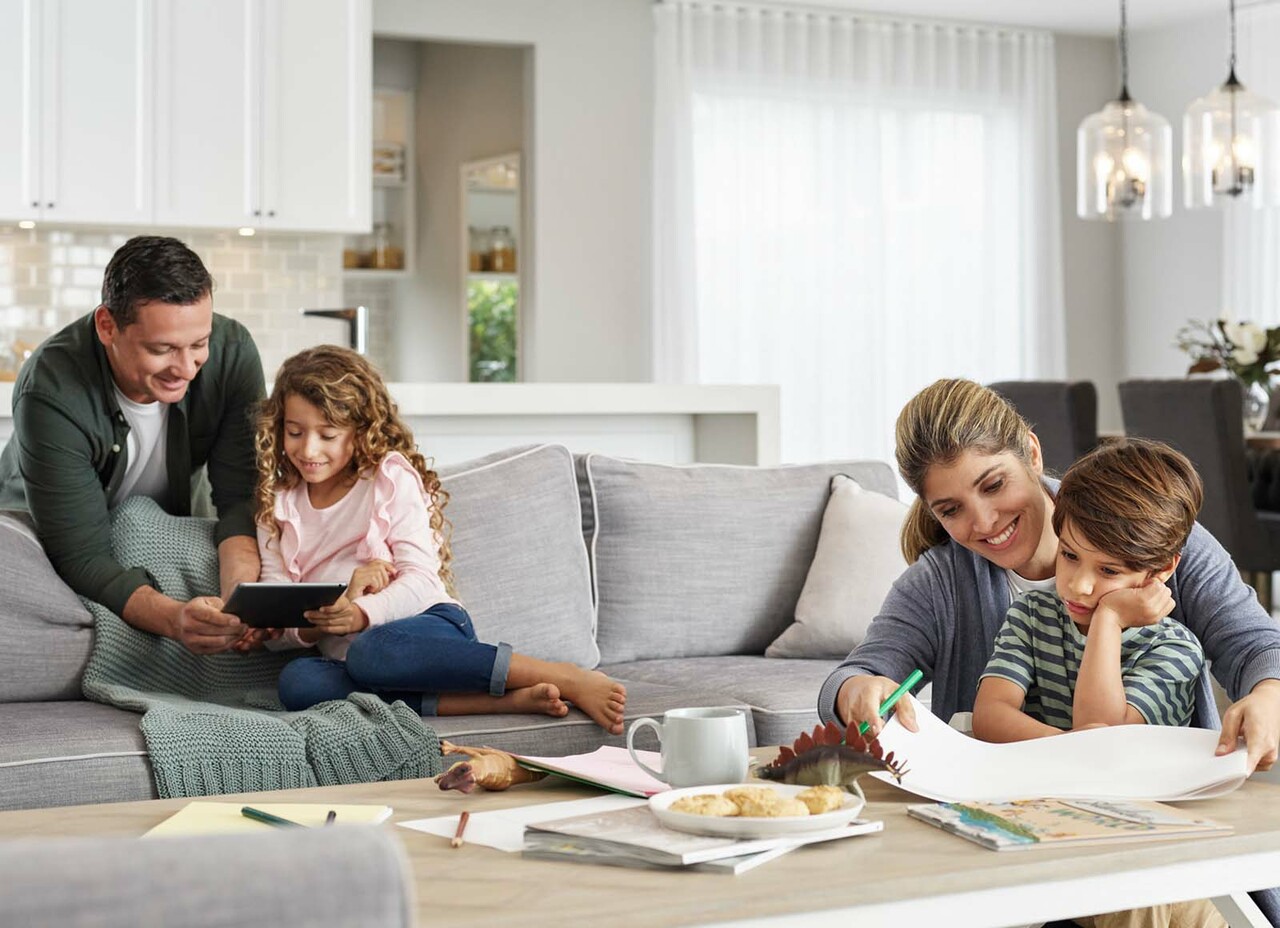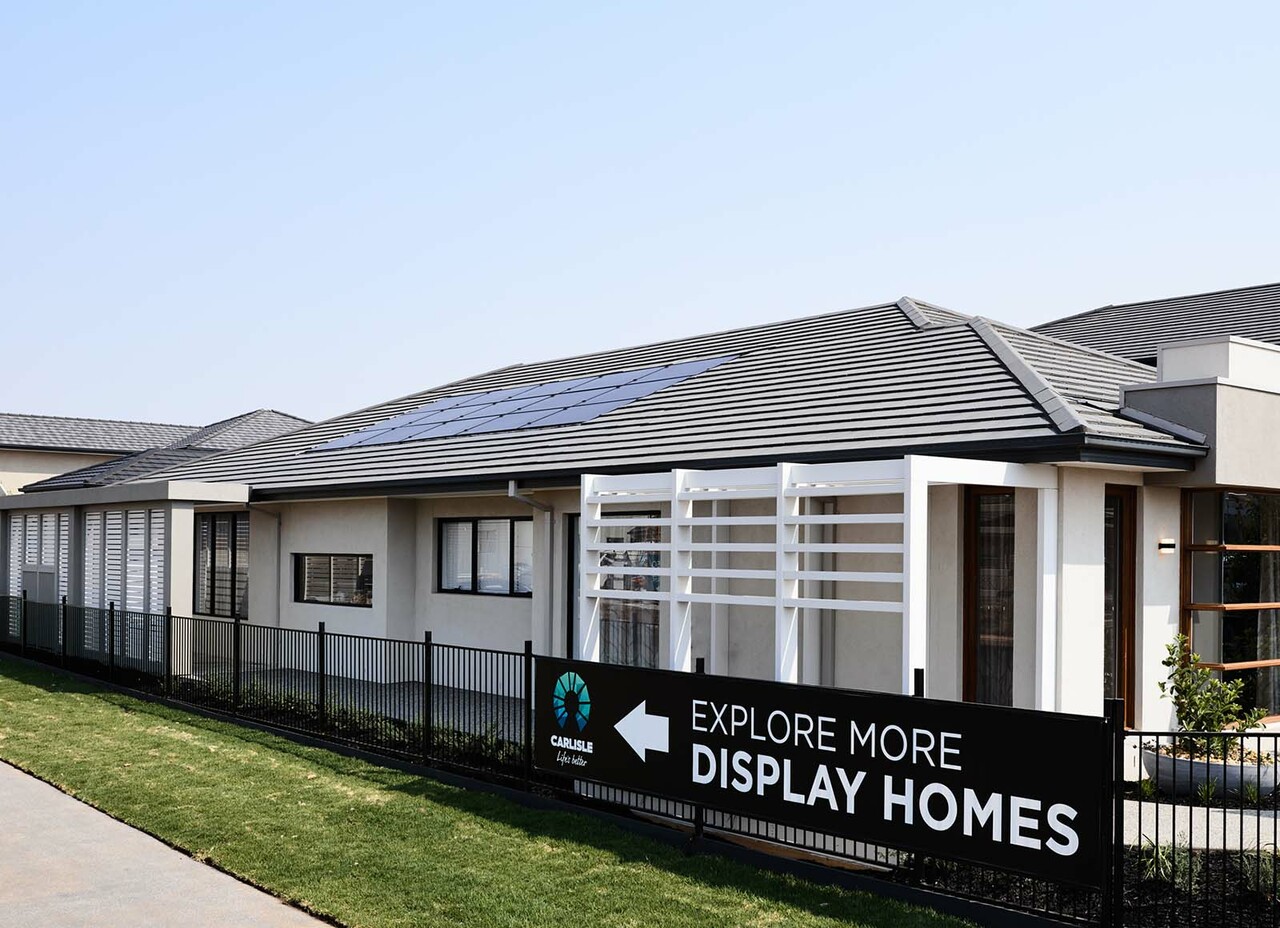Building With Solar | Home Solar Advice
by Sandy Mcdermott, General Manager - Operations

Specify home solar in your new build and enjoy the benefits for years to come.
Sick and tired of rising electricity prices? Fortunately, there is an alternative; integrate solar panels when you’re building your new home to harness the sun’s renewable energy and significantly reduce – or even eliminate – your electricity bills.
At Carlisle, we are delighted to offer home solar system solutions from leading Australian suppliers Monier and Chromagen.
Here’s everything you need to know about specifying home solar systems in your new build.
How does home solar work?
With a home solar system, solar panels on your roof capture sunlight and turn it into electricity, which is used to power your home. The energy you create is clean, free and better for the environment.
During the day, any unused power flows back to the grid. You’ll earn a feed-in tariff credit from any electricity you return to the grid, which can then be used against the cost of any energy you draw from the grid. This process helps reduce the amount of electricity you need to buy, thereby lowering your electricity bills.
At night or at times when you need more power (such as during a week of heavy rain), your power is sourced from the grid.

Unused power generated during the day feeds back into a grid system and is stored there. This means you’ll still retain electricity during the night and periods of heavy rain or cloud. Learn more about Chromagen solar power.
The benefits of adding solar to new home builds
If you’re building a new home, integrating home solar panels from the start offers significant advantages. New builds provide a clean slate, allowing the home solar system to be designed and installed in a way that maximises efficiency and aesthetic appeal.
For example, when you build with Carlisle and decide to add a solar panel system to your new home, we will ensure the roof is optimally oriented and free of any obstructions, making it easier to install a system that meets your energy needs.
Installing solar during the construction phase is also more cost-effective than retrofitting an existing home, as the installation can be seamlessly managed as part of your build. At Carlisle, we coordinate the entire process, ensuring that your solar panels are installed by reputable professionals with expertise in home solar systems. The installation costs are integrated into your overall build cost, making it easier to manage your budget and avoid any unexpected expenses after your home is completed. This integration not only guarantees a high-quality installation but also provides peace of mind, knowing that your solar power system is optimised from the start.
Moreover, homes with installed solar panels often see an increase in property value, making your investment in clean energy not only beneficial for reducing energy costs but also for boosting the resale value of your home.
Discover the many benefits of building new, including adding solar to your new home. Explore over 100 home designs that can be optimised with rooftop solar.
Can I go completely off-grid?
That depends on how big your solar system is and how much solar energy your household will consume. According to the Energy Australia blog, the energy use for most households exceeds what their solar system provides, so they still need to rely on the grid for a portion of their electricity.
However, with a well-designed home solar system, your power bills will be much lower than without one.
Different types of home solar systems
A solar system consists of several photovoltaic (PV) home solar panels secured to your roof with mounting equipment. These panels are connected to an inverter that converts solar-generated DC (Direct Current) electricity to AC (Alternating Current) electricity suitable for household use.
When choosing the right system size, consider your household’s energy consumption and roof space. The larger the system size, the more electricity you can generate and potentially save on your energy costs.

Specify a solar PV system at your Spectra selections stage! A new solar system will quickly pay itself off with the amount you’ll save on energy bills. Featured here: Walton, Manor Lakes Estate, Manor Lakes.
The benefits of a battery
Alternatively, you can choose a home solar-plus-storage system that’s compatible with a rechargeable battery, which allows you to store solar energy.
If you install a solar battery for your solar-plus-storage system it can significantly boost your power production and reduce your reliance on the grid. According to Energy Australia, adding a 4kWh solar battery to a 5kW solar system can increase the amount of self-generated electricity a household consumes from 30% to 60%.
Some types of solar batteries also allow you to use stored solar energy to power your home when there is a power outage in your area.
What happens on cloudy days?
On overcast days, your rooftop solar system will still produce at least 25% of the energy it normally creates as the solar panels capture two different types of light; visible light and infrared light.
During periods of heavy rain or cloud, when your home needs more power, net metering automatically kicks in so you draw energy from the grid. This ensures a steady supply of energy even when the weather isn’t ideal.
Enjoy long term savings with home solar panels
A home solar system is a long term investment, but that initial outlay to install rooftop solar panels quickly pays itself off in lowered power bills. Specify solar at the building stage and you’ll enjoy reduced electricity bills the moment you move into your home. And these electricity bill savings will continue for the life of the system, making it a solid and smart investment.

Reduce your home’s carbon footprint and increase its long-term value. Build with solar and save from the moment your family moves in.
Future-proof your home with renewable energy
Fact is, Australia is conscious of climate change and also in reducing its reliance on fossil fuels in favour of renewable energy, which means system and installation prices are coming down. By installing solar early, you can take advantage of these reduced prices and start saving on electricity straight away.
By producing clean energy from the sun, you’re reducing your home’s carbon footprint, so you know you’re doing your bit for the environment.
In addition, home solar is something buyers value and can be a major selling point if one day you decide to sell your home.
What system size do I need?
The best way to work out the right system size is to look at past electricity bills and see how much electricity you use on a daily basis. Your power consumption is measured and billed in kilowatt hours (kWh). According to Choice Australia, a typical home uses 20kWh power per day, which equates to a 5kWh solar system.
Stylish new solar options
With home solar becoming increasingly popular, designers are delivering up innovative new systems to complement modern homes.
One of the most impressive on the market is Monier’s InlineSOLAR system, which is recessed into your roofline rather than bolted on top of your roof, to create a sleek and seamless appearance. Note: Inline solar is not available for homes located in bushfire prone areas.
Each system varies adn is dependent on certain factors that are unique to your home and lifestyle. The orientation of your home determines how much energy you can harness, as well as how much energy you consume.

Each system varies and is dependent on certain factors unique to your home and lifestyle. The orientation of your home and how much energy you consume are elements you’ll need to consider.
Solar power is the way of the future – find out exactly how much you can save by going solar on the Chromagen website and learn more about Monier InlineSOLAR here
Solar hot water systems
In addition to entire home solar systems, Carlisle includes solar hot water systems as part of our minimum 7-Star energy efficiency rating on all of our new homes.
Solar hot water systems use the sun’s energy to heat water, reducing your reliance on traditional water heating methods that consume significant amounts of electricity. This can further lower your electricity bills and contribute to long-term bill savings.
Pairing a solar hot water system with your home solar setup ensures that more of your home’s energy needs are met by renewable energy sources.
Government rebates and support for home solar systems
Various government rebates and incentives are available to help offset the cost of installing solar systems. These rebates are available for both new builds and established homes, making home solar more accessible to all homeowners.
In Australia, the federal government offers the Small-Scale Renewable Energy Scheme (SRES), which provides a rebate based on the size of your solar system and the location of your home. This rebate is available when installing solar on a new build, meaning you can integrate solar power during the construction phase and still benefit from reduced systems cost.
By taking advantage of these rebates, you can further reduce the amount of electricity you need to buy from the grid and accelerate the payback period of your home solar investment, whether you're building a new home or upgrading an existing one.
Visiting a Carlisle display home can give you firsthand insight into the benefits of home solar systems and how they can be seamlessly integrated into your new build.
Visit one of 70+ display homes across Melbourne and Geelong today and chat with one of our helpful Sales Consultants about how you can reduce your energy costs in your new home.

Sandy Mcdermott
General Manager - Operations
Sandy plays a crucial role in leading Carlisle’s Operations Team to drive project success and maintain the highest standards in construction practices. Sandy is responsible for overseeing daily operations to ensure our homes are complete on, or ahead of time.
Learn more about Sandy Mcdermott